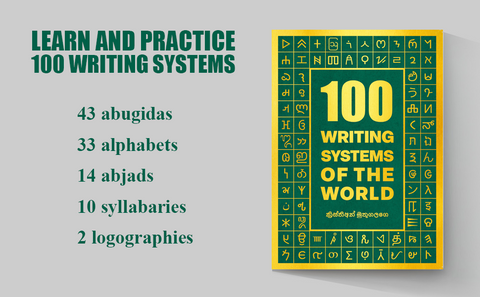Illuminating the Enigmatic: Unraveling the Secrets of the Manichaean Script

Script type: The Manichaean script is an abjad, belonging to the family of writing systems that represent consonants while leaving vowels to be inferred contextually.
Writing direction: The Manichaean script was typically written from right to left, similar to other ancient scripts from the same period.
Creator and invention time: The Manichaean script was developed by the founder of the Manichaean religion, the prophet Mani (also known as Manichaeus), in the 3rd century CE. Mani devised this script to record his religious teachings and doctrines, merging elements from various existing scripts of the time.
Time period of use: The Manichaean script flourished during the 3rd to 10th centuries CE as the primary writing system for the Manichaean religion. Manichaeism, a syncretic faith that combined elements of Zoroastrianism, Christianity, Buddhism, and other religions, enjoyed a significant following across the ancient world during this time.
Population and current usage: Manichaeism experienced a decline over the centuries, and by the medieval period, its followers dwindled. Today, no active community is known to use the Manichaean script for religious purposes.
Usage area: The usage area of the Manichaean script spanned across vast regions, including ancient Mesopotamia (present-day Iraq and Iran), Central Asia, the Roman Empire, and even parts of China, indicating the widespread influence of the Manichaean religion.
Languages associated with the script: The Manichaean script was used to write religious texts and scriptures related to the Manichaean religion. These texts were composed in several languages, including Middle Persian, Parthian, Sogdian, and Uyghur.
Interesting Facts:
- Battle of Good and Evil: The Manichaean religion taught a cosmic dualistic worldview, with the eternal struggle between the forces of light (good) and darkness (evil). This concept is reflected in the script's design, where characters are written with contrasting ink colors to symbolize the cosmic battle.
- Manuscripts on Birch Bark: Many surviving Manichaean texts are written on birch bark, which has contributed to their preservation over the centuries.
- Suppression and Survival: As a result of religious persecutions and political upheavals, the Manichaean religion faced suppression by various ruling powers, leading to the eventual decline of the script and the religion. However, some texts and artifacts were hidden or preserved in remote locations, aiding modern-day scholars in deciphering the script and understanding the religion.
- Rediscovery and Research: The decipherment of the Manichaean script began in the late 19th century, sparking renewed interest in the study of the Manichaean religion, its beliefs, and its impact on religious history and intercultural exchange.
- UNESCO Heritage: In 2009, UNESCO inscribed the Manichaean script on its list of endangered scripts, recognizing the need for preservation efforts to safeguard this valuable piece of human history.
The Manichaean script is a remarkable testament to the syncretic religious traditions that once thrived and influenced diverse cultures throughout the ancient world. Through its intricate characters and historical significance, the script offers a window into the beliefs and philosophies of an influential religious movement that shaped the religious landscape of its time. As we continue to uncover and explore the secrets of the Manichaean script, we gain deeper insights into the profound ways in which human spirituality and knowledge have intertwined throughout history.

Practice Manichaean and other scripts with our book "100 Writing Systems of the World"!
Discover 100 diverse writing systems from around the globe in one captivating book. Practice writing different scripts with full character charts and essential information provided. Let your imagination soar on the blank right pages as you explore 43 abugidas, 33 alphabets, 14 abjads, 10 syllabaries, and 2 logographic scripts. Dive into numeral systems and even design your own writing system. Immerse yourself in the beauty and diversity of global scripts today with "100 Writing Systems of the World." Unleash your creativity and order now!